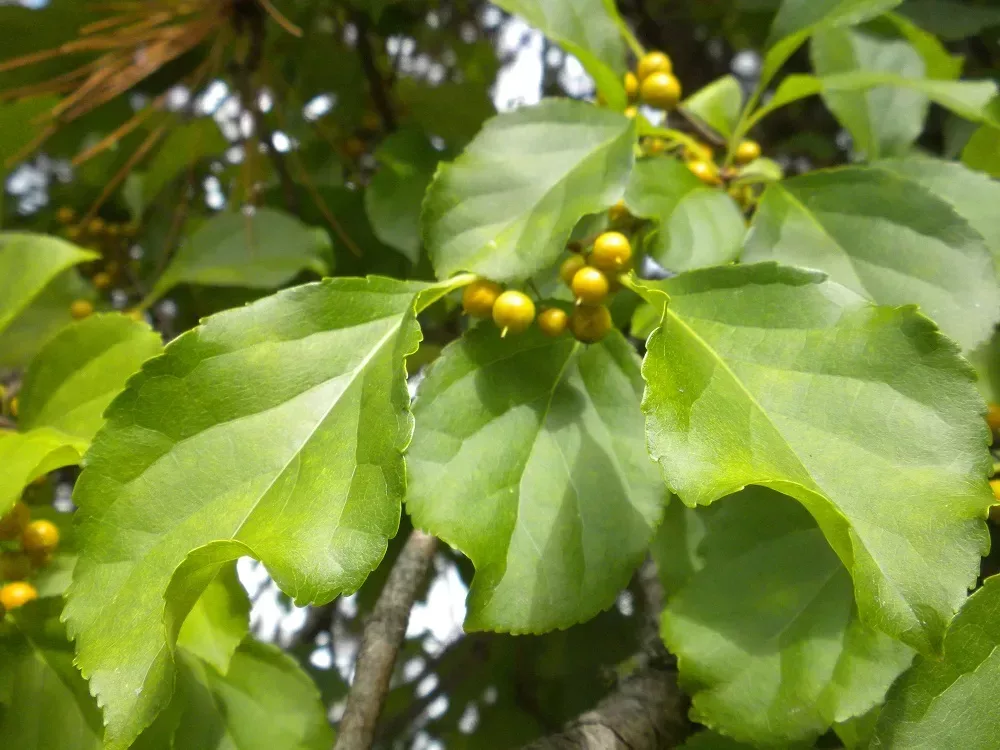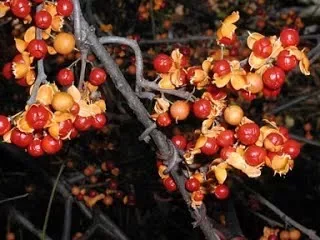
Oriental, or asiatic, bittersweet is a perennial, deciduous vine that can grow up to 60 ft. Its stems have dark brown, striated bark. The alternate leaves are elliptic to ovate, and spiral evenly around the stem. Axillary flowers bloom in May to early June yielding bright, reddish-orange fruit in the fall. Oriental bittersweet can be confused with american bittersweet, a native species, which has terminal inflorescence and orange capsules.

